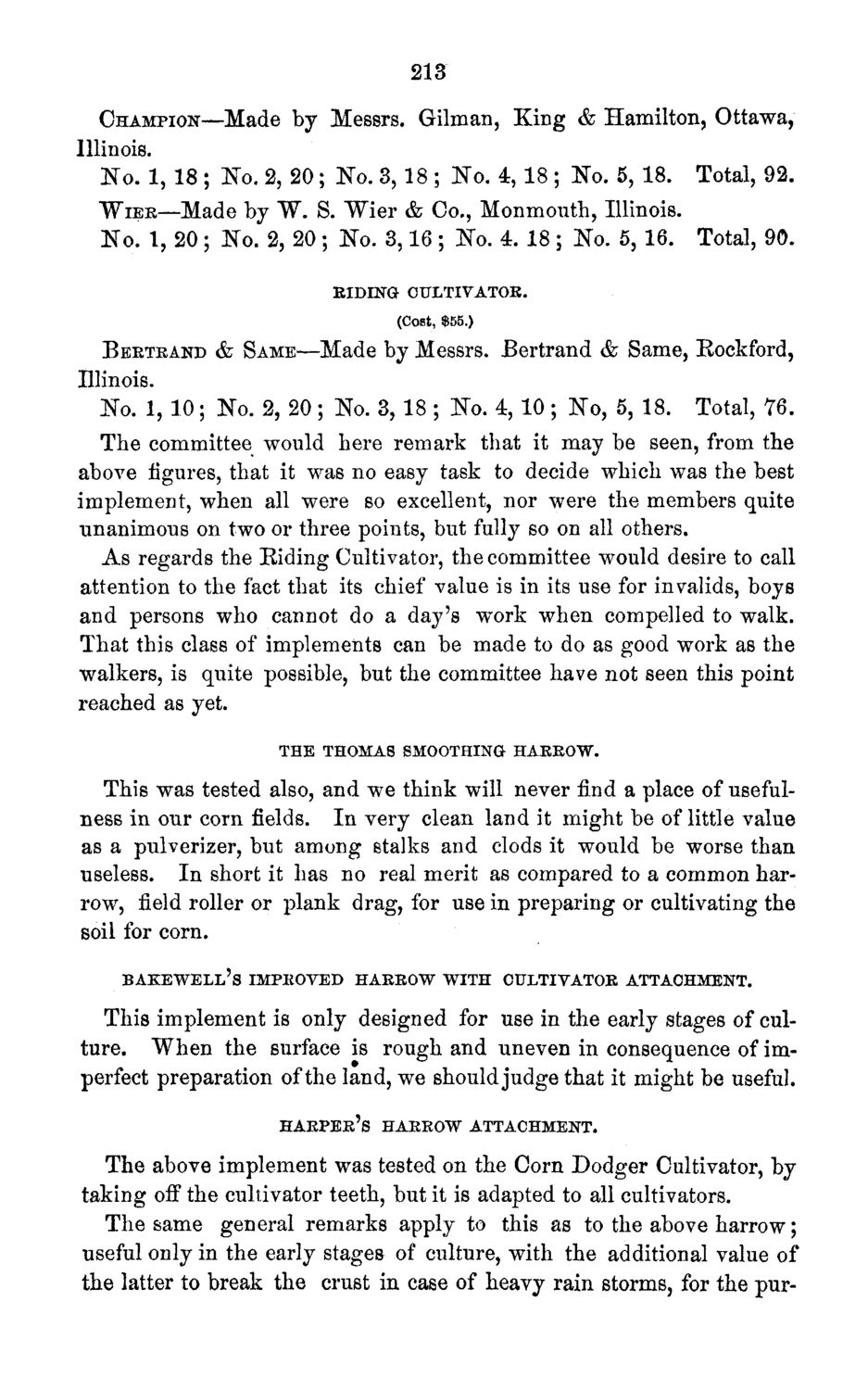| |
| |
Caption: Board of Trustees Minutes - 1871
This is a reduced-resolution page image for fast online browsing.

EXTRACTED TEXT FROM PAGE:
213 CHAMPION—Made by Messrs. Gilman, King & Hamilton, Ottawa, Illinois. No. 1, 18 ; No. 2, 2 0 ; No. 3,18 ; No. 4, 18 ; No. 5, 18. Total, 92. WIER—Made by W. S. Wier & Co., Monmouth, Illinois. No. 1, 20 ; No. 2, 20 ; No. 3,16 ; No. 4. 18 ; No. 5, 16. Total, 90. R I D I N G CULTIVATOR. (Cost, $55.) BERTRAND & SAME—Made by Messrs. JBertrand & Same, Eockford, Illinois. No. 1, 10; No. 2, 20 ; No. 3, 18 ; No. 4, 10 ; No, 5, 18. Total, 76. The committee would here remark that it may be seen, from the above figures, that it was no easy task to decide which was the best implement, when all were so excellent, nor were the members quite unanimous on two or three points, but fully so on all others. As regards the Eiding Cultivator, the committee would desire to call attention to the fact that its chief value is in its use for invalids, boys and persons who cannot do a day's work when compelled to walk. That this class of implements can be made to do as good work as the walkers, is quite possible, but the committee have not seen this point reached as yet. THE THOMAS SMOOTHING HARROW. This was tested also, and we think will never find a place of usefulness in our corn fields. In very clean land it might be of little value as a pulverizer, but among stalks and clods it would be worse than useless. In short it has no real merit as compared to a common harrow, field roller or plank drag, for use in preparing or cultivating the soil for corn. B A K E W E L L ' S IMPROVED HARROW W I T H CULTIVATOR ATTACHMENT. This implement is only designed for use in the early stages of culture. When the surface is rough and uneven in consequence of imperfect preparation of the land, we should judge that it might be useful. H A R P E R ' S HARROW ATTACHMENT. The above implement was tested on the Corn Dodger Cultivator, by taking off the cultivator teeth, but it is adapted to all cultivators. The same general remarks apply to this as to the above harrow; useful only in the early stages of culture, with the additional value of the latter to break the crust in case of heavy rain storms, for the pur-
| |